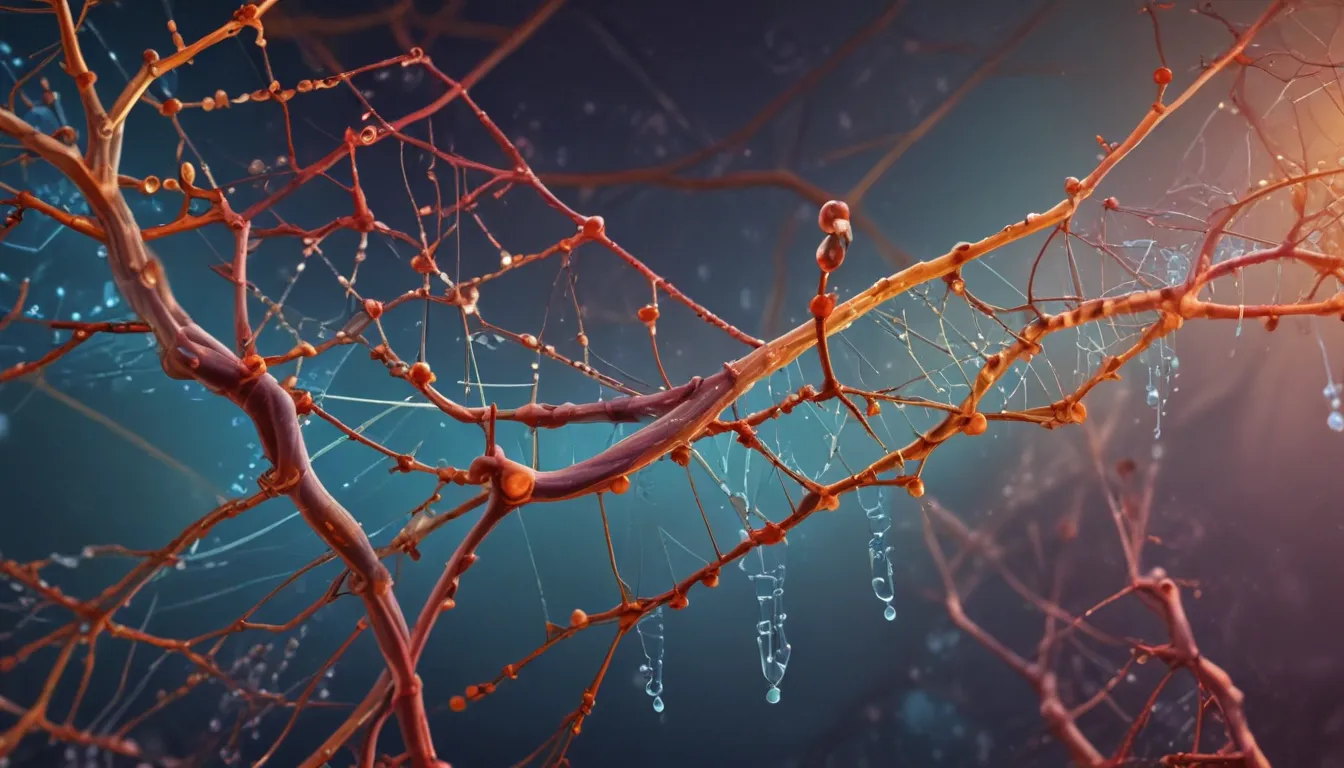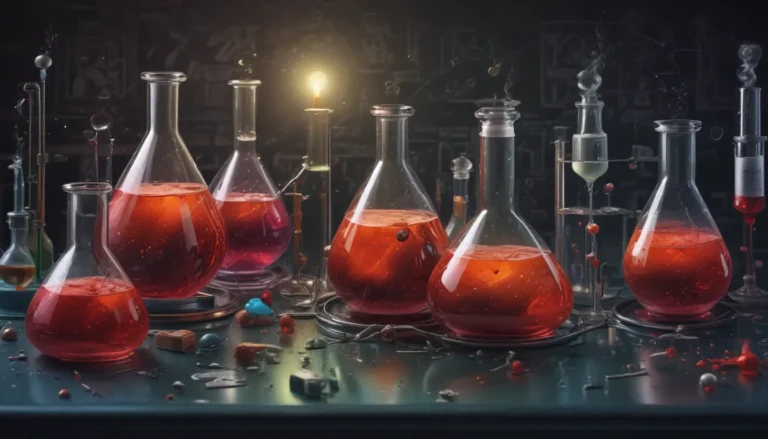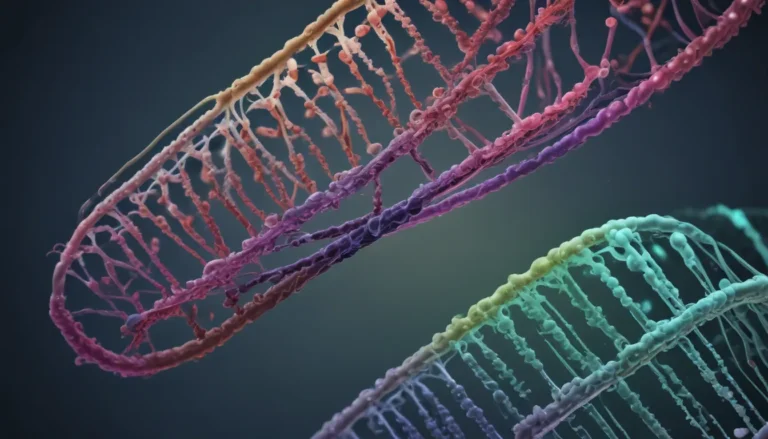A Note About Images: The images used in our articles are for illustration purposes only and may not exactly match the content. They are meant to engage readers, but the text should be relied upon for accurate information.
Glycolysis, the metabolic pathway that converts glucose into energy, is a cornerstone of cellular metabolism, essential for all living organisms. This fundamental process takes place in the cytoplasm, providing valuable insights into the biochemical reactions within cells. In this captivating journey into the world of glycolysis, we will explore 18 enigmatic facts that illuminate the significance and intricacies of this vital pathway.
Unlocking Energy: The Basics of Glycolysis
- Crucial Energy Conversion: Glycolysis transforms glucose into energy for cells, with or without oxygen, serving as a power plant for the body.
- Therapeutic Potential: Understanding glycolysis aids in developing treatments for diseases like cancer and metabolic disorders, offering new ways to combat illnesses and improve overall health.
The Foundation of Cellular Respiration
Glycolysis initiates the breakdown of glucose, converting it into pyruvate while generating ATP and NADH. This metabolic pathway is the key step in extracting energy for cellular metabolism.
Where the Magic Happens: The Cytoplasm
Operating within the cytoplasm of all cells, glycolysis is a universal process present in both prokaryotes and eukaryotes, providing a foundational pathway for energy production.
Oxygen-Free Zone: Anaerobic Glycolysis
In the absence of oxygen, glycolysis can occur, distinguishing it as an anaerobic process essential for cellular energy production, unlike the later stages of aerobic respiration.
Harvesting Energy: The Net Gain of Glycolysis
Through glycolysis, two ATP molecules are produced, alongside two molecules of NADH, offering a source of energy crucial for cellular functions and metabolism.
Enzymatic Control: Regulating Glycolysis
Key enzymes such as hexokinase, phosphofructokinase, and pyruvate kinase orchestrate glycolysis stages to maintain metabolic balance, responding to the cell’s energy requirements effectively.
Red Blood Cell Resilience
Red blood cells rely solely on glycolysis for energy production, highlighting its critical role in supporting cellular metabolism in the absence of mitochondria.
Two Phases, One Goal: Glycolysis Simplified
The energy investment phase and the energy payoff phase define glycolysis, requiring ATP initially and then generating high-energy molecules to fuel cellular activities.
Glucose Transformation: Pyruvate Production
Glycolysis intricately converts a glucose molecule into two pyruvate molecules, setting the stage for subsequent cellular respiration steps based on oxygen availability.
Hormonal Harmony: Glycolysis Regulation
Hormones like insulin and glucagon play a vital role in regulating glycolysis, ensuring proper glucose utilization and storage based on the body’s energy demands.
Dynamic Conditions: Aerobic and Anaerobic Glycolysis
While aerobic respiration demands oxygen, glycolysis can occur in both aerobic and anaerobic settings, offering a versatile energy source under varying conditions.
Heat Generation: A Byproduct of Glycolysis
Some steps within glycolysis release energy in the form of heat, providing insights into the heat production mechanisms within cells during metabolic processes.
Evolutionary Equation: Conserved Glycolysis
Across different species, glycolysis remains highly conserved, indicating its fundamental role in cellular energy metabolism throughout evolutionary history.
Lactate Production: A Glycolytic Outcome
In oxygen-deprived conditions, such as intense exercise, glycolysis may lead to the production of lactate as an end product, showcasing the pathway’s adaptability.
Cancer Connection: The Warburg Effect
Cancer cells often rely on increased glycolysis, known as the Warburg effect, to sustain their energy demands and fuel rapid growth and proliferation.
Disease Dilemmas: Glycolysis Defects
Defects in glycolysis enzymes due to genetic mutations can result in diseases like glucose-6-phosphate dehydrogenase deficiency and pyruvate kinase deficiency, underscoring its critical role in health.
Dietary Influence: Modulating Glycolysis
Dietary factors, including high-carbohydrate intake or fasting, can impact glycolysis rates by providing substrates for the pathway and altering hormonal control, influencing energy production.
Therapeutic Target: Glycolysis in Disease Management
Given its central role in cellular processes, glycolysis is a promising target for therapeutic strategies against diseases like cancer, metabolic disorders, and infectious diseases, offering new avenues for treatment.
Unveiling Glycolysis: A Pathway to Innovation
Delving into the mysteries of glycolysis unveils a world of possibilities, from understanding cellular metabolism intricacies to developing novel treatment approaches. As researchers continue to explore this fundamental pathway, new insights emerge, paving the way for groundbreaking discoveries in metabolic research.
FAQs
Q: What is glycolysis?
A: Glycolysis is a metabolic pathway converting glucose into pyruvate, generating ATP and NADH.
Q: Why is glycolysis significant?
A: Glycolysis provides essential energy for cellular processes and serves as the starting point for metabolic pathways.
Q: Where does glycolysis occur?
A: Glycolysis takes place in the cytoplasm of cells, regardless of their type.
Q: How is glycolysis regulated?
A: Glycolysis undergoes regulation by enzymes and signaling molecules to ensure energy balance within cells.
Q: What are the end products of glycolysis?
A: Glycolysis yields two pyruvate molecules, two ATP molecules, and two NADH molecules.
Q: What happens to pyruvate post-glycolysis?
A: Pyruvate can enter aerobic respiration in mitochondria or undergo fermentation in low oxygen conditions.
Q: Can glycolysis occur without oxygen?
A: Yes, glycolysis can proceed without oxygen, leading to fermentation for NAD+ regeneration.
Q: Does glycolysis yield more ATP than aerobic respiration?
A: No, aerobic respiration produces significantly more ATP compared to glycolysis.
Q: Can glycolysis be targeted for therapy?
A: Yes, dysregulated glycolysis in diseases like cancer and diabetes makes it a viable therapeutic target.
Q: Does glycolysis happen universally in all cells?
A: Yes, glycolysis is a universal process observed in all cells, from bacteria to human cells.
Exploring Glycolysis Together
Our shared journey into the realm of glycolysis uncovers the complex yet fascinating world of cellular energy production. From its evolutionary resilience to its role in disease management, glycolysis continues to captivate researchers and hold promise for innovative therapeutic interventions. Let us continue unraveling the mysteries of glycolysis, standing on the brink of new discoveries in the dynamic landscape of cellular biochemistry.






